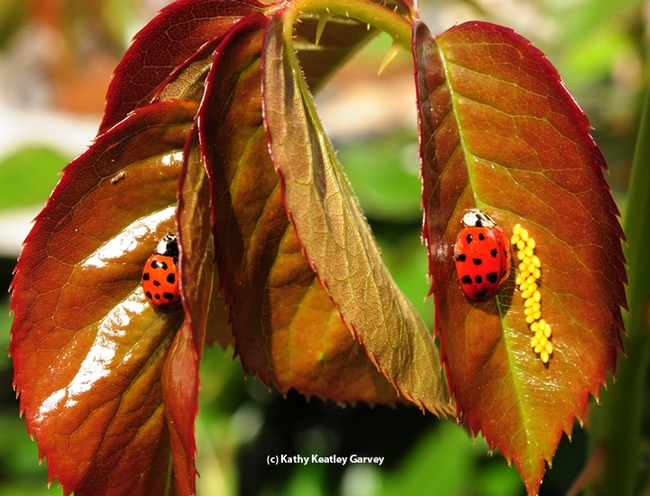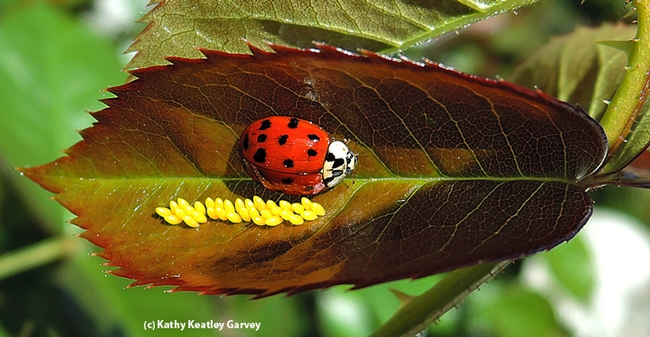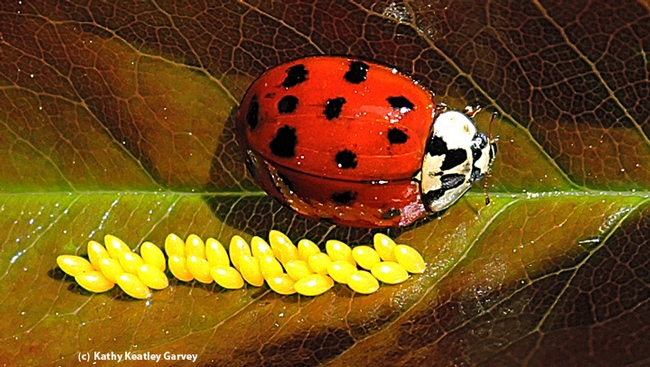- Author: Kathy Keatley Garvey
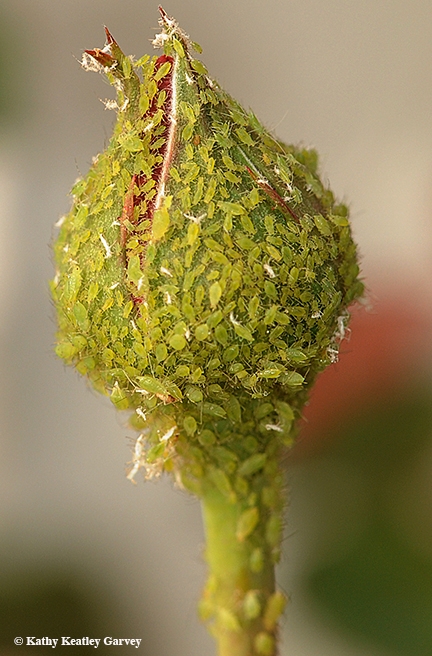
Have you ever watched a lady beetle gobble up those pesky aphids? Aphids may look fragile, harmless and sluggish, but wow, can those tiny insects ever suck those juices right out of your budding roses and other plants!
The UC Statewide Integrated Pest Management Program (UC IPM) defines aphids on its website: "Aphids are small, soft-bodied insects with long slender mouthparts that they use to pierce stems, leaves, and other tender plant parts and suck out fluids. Almost every plant has one or more aphid species that occasionally feed on it. Many aphid species are difficult to distinguish from one another; however, management of most aphid species is similar."
"Aphids have soft pear-shaped bodies with long legs and antennae and may be green, yellow, brown, red, or black depending on the species and the plants they feed on," UC IPM says. "A few species appear waxy or woolly due to the secretion of a waxy white or gray substance over their body surface. Most species have a pair of tubelike structures called cornicles projecting backward out of the hind end of their body. The presence of cornicles distinguishes aphids from all other insects."
"Generally adult aphids are wingless, but most species also occur in winged forms, especially when populations are high or during spring and fall. The ability to produce winged individuals provides the pest with a way to disperse to other plants when the quality of the food source deteriorates."
Right. If you look closely, you may see the winged ones. Or see them being devoured.
For lady beetles, this is not about eating just one. it's an all-you-can-eat buffet of hapless prey. It's like the insect version of a robotic vacuum cleaner or a paper shredder of industrial strength. Or the insect version of Joey "Jaws" Chestnut, the Major League eater who reportedly trains by fasting and by stretching his stomach with milk, water and protein supplements.
Lately we've been watching the multicolored Asian lady beetle, Harmonia axyridis, go about its business of eating aphids. It's a predator with a purpose: 50 to 75 aphids a day.
It doesn't need to train.
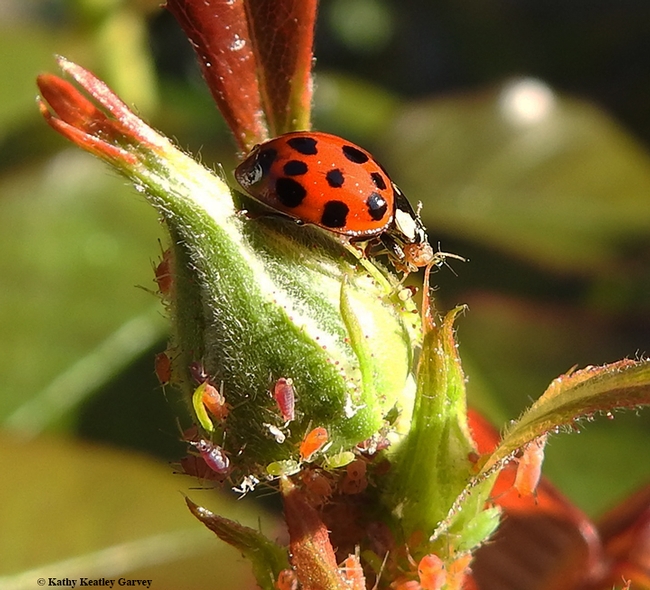
- Author: Kathy Keatley Garvey
There's gold on them thar roses.
No, not the kind of gold found during the California Gold Rush (1848–1855) that brought some 300,000 folks to the Golden State.
These are gold eggs from the multicolored Asian beetle, Harmonia axyridis, that we found on our Sparkle-and-Shine roses last week. The aphids are sparkling and the lady beetles are shining.
A native of eastern Asia, the multicolored Asian beetle was introduced in California by the U.S. Department of Agriculture in 1916, and in 1964 -1965 for the biological control of pecan aphids. Later, from 1978 through 1982, released beetles took hold in Connecticut, Delaware, Georgia, Louisiana, Maine, Maryland, Mississippi, Ohio, Pennsylvania, and Washington.
The multicolored Asian beetles are tiny, about 7 mm long and 5.5 mm wide. Spots? They range from as many as 19 spots to no spots at all. Color? From red to orange to yellow and (rarely) black. A key identifying characteristic is the black M-shaped mark behind its head.
The beetles, commonly known as ladybugs (but they're beetles, not bugs), are from the family Coccinellidae and they eat lots and lots of aphids and other soft-bodied insects, including scale insects and mites.
Aphids are not your friends. With their piercing mouthparts, they suck the juices right out of your plants, including your favorite roses. Lady beetles are your friends. They have voracious appetites and can gobble up 50 to 75 aphids a day.
Lush new growth often means a gathering of aphids, which means a gathering of lady beetles. Look closely and you might seen a cluster or row of about 20 oval eggs on the leaves.
That's the gold.
And so the cycle continues.
(Note: If you're looking for more roses, the California Center for Urban Horticulture, UC Davis, has just announced its 10th annual Rose Days will be Saturday and Sunday, May 6-7, from 10 a.m. to 4 p.m. at the Foundation Plant Services parking lot, 455 Hopkins Road, UC Davis campus.)
